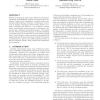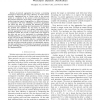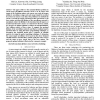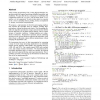21 search results - page 2 / 5 » Composition Techniques for Tree Communication Schedules |
APLAS
2004
ACM
13 years 10 months ago
2004
ACM
Modular programming enjoys many well-known advantages: readability, maintainability, separate development and compilation. However, the composition of modular units (components) s...
INFOCOM
2010
IEEE
13 years 3 months ago
2010
IEEE
—In-network aggregation has become a promising technique for improving the energy efficiency of wireless sensor networks. Aggregating data at various nodes in the network result...
EMSOFT
2006
Springer
13 years 9 months ago
2006
Springer
Distributed real-time systems require a predictable and verifiable mechanism to control the communication medium. Current real-time communication protocols are typically independe...
GLOBECOM
2009
IEEE
14 years 4 days ago
2009
IEEE
—The paper addresses the maximal lifetime problem in sensor-target surveillance networks. Given a set of sensors and targets in an Euclidean plane, each sensor can watch all targ...
TOG
2012
11 years 7 months ago
2012
Using existing programming tools, writing high-performance image processing code requires sacrificing readability, portability, and modularity. We argue that this is a consequenc...




